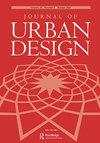虚拟巷道基础设施的设计:通过增强现实在城市密度压力下未充分利用的空间中激活社区
IF 1.9
Q3 URBAN STUDIES
引用次数: 0
摘要
摘要本研究对西澳大利亚珀斯的34条车道进行了文献研究、场地和区域分析以及观测。对所有权、靠近住宅和公共交通、关键节点连接、比例、表面“画布”面积和开发限制进行了评估,从而得出了一个合适的位置来开发增强现实建筑场所制作“投影”主张。该构思在具有本地化空间联系和功能的本地“场所”环境中呈现迭代设计过程可视化,并没有得出最终解决方案,而是一种新颖、经济高效、适应性强、“敏捷”的方法,在不进行永久性结构改变的情况下激活“丢失的空间”,同时保留其原始效用。本文章由计算机程序翻译,如有差异,请以英文原文为准。
Design of virtual laneway infrastructure: community activation through augmented reality in underutilized spaces in cities pressured to densify
ABSTRACT This study undertook literature studies, site and precinct analyses, and observations of 34 laneways in Perth, Western Australia. Ownership, proximity to residential, and mass transit public transport, critical node linkages, proportions, surface ‘canvas’ area, and development restrictions were assessed eliciting a suitable location to develop an Augmented Reality architectural placemaking ‘projection’ proposition. The ideation presents iterative design process visualizations within a vernacular ‘place’ setting with localized spatial linkages and functionalities, and does not draw to a definitive solution, but a novel, cost-effective, adaptable, and ‘agile’ method of activating ‘lost spaces’ without permanent structural alteration while retaining their original utility.
求助全文
通过发布文献求助,成功后即可免费获取论文全文。
去求助
来源期刊

Journal of Urban Design
URBAN STUDIES-
CiteScore
4.70
自引率
4.80%
发文量
61
期刊介绍:
The Journal of Urban Design is a scholarly international journal which advances theory, research and practice in urban design. There is a growing recognition of the need for urban design in shaping, managing and improving the quality of the urban environment. It is now considered one of the core knowledge components of planning and architectural education and practice. Thus, increasing numbers of architects, planners, surveyors, landscape architects and other professions concerned with the quality of urban development are specialising in urban design. The Journal of Urban Design provides a new forum to bring together those contributing to this re-emerging discipline and enables researchers, scholars, practitioners and students to explore its many dimensions. The Journal publishes original articles in specialised areas such as urban aesthetics and townscape; urban structure and form; sustainable development; urban history, preservation and conservation; urban regeneration; local and regional identity; design control and guidance; property development; practice and implementation.
 求助内容:
求助内容: 应助结果提醒方式:
应助结果提醒方式:


